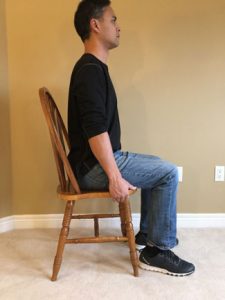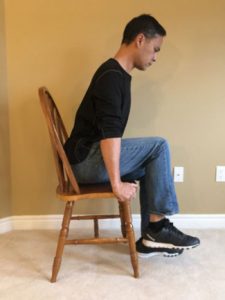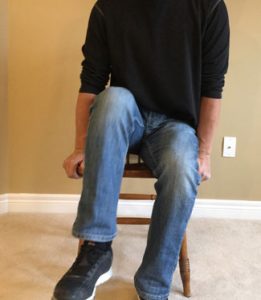Test#3: The Hip Raise Test
You should ‘Hip Shift’ to protect your back. Ignore it & it will become very sore

SN Health Resources | Updated July 16, 2025
Hip shifting is a must. It’s what you need to do with every step you take. Keep reading for instructions below on what to do about it.
Your hips keep your pelvis and lumbar spine supported and stable. The more that you keep your hips actively contracting, the less your back has to be so it can relax.
In fact, it’s your hips (or lack of their function) that have everything to do with whether or not YOU will suffer from back pain (and even knee pain too!). Many people with both back and/or hip problems land on this site!
If you are suffering from lower back problems, you are ALSO very likely dealing with hip problems also. Although you may only be feeling the strain in your lower back, it’s your hips that are also straining to support you.
Below is a very simple hip move you can do now. You’ll know right away if your hips are doing their job (one specific job of many that is) to protect you.
Bonus: You can do this test anytime that you’re sitting. It’s also a great exercise to retrain your hips at the same time!
Warning: Don’t be alarmed if you can’t do this well enough to see the movement. It is rarely taught or practised. This move is a real pain to do, but when you master it, you’ll feel sooooo much better!
Note: Most people who are very tight and stiff will feel this movement a lot more than they can see it. If it’s really hard to do, then it’s your sign that you need to persist in doing it more often. Hip movement is very important here!
The Hip Raise
1) Sit on a chair that has a firm surface. Do not use a cushioned seat.

At home, work or in the car
2) Grasp both sides of the seat gently for support while sitting up straight.
3) While leaning forward slightly, contract and flex the muscles of your hip and bum.

4) Press one side of your bottom firmly on the seat while trying to raise the other side off of your seat.
Caution: You’re not trying to lean to one side to raise your hip. You must try to raise up vertically. Only a slight lean (see picture) is OK.

Closer view with one side off of the seat
5) Hold this position as high as possible for up to 5 seconds.
6) Rest and repeat with your other side.
How Did You Do?
How did this feel specifically with the raised hip?
Did you feel any movement?
Were you able to successfully raise one side off of the chair? A little or a lot?
Were you able to hold it for 5 seconds or even longer without feeling sore or tired?
Was your hips sore during or after the raise?
Did it feel like you could not did this at all?
If you had any difficulty with this raise, you definitely have hip weaknesses that you MUST correct.
This raise is what you need whenever you walk, step upstairs or step over something with the proper support of your hips.
If you have severe pain, there is a very good chance you cannot do this raise well and there is very little movement of your hip.
This does not mean that your hips are not ‘physiologically’ able to do the test. Everyone can and should be able to do this move without any discomfort for up to 1 minute. Neglect or injury is what causes this lack of mobility.
It is simply a matter of retraining and restrengthening which will take time and dedication. It’s not an option because it’s fundamental to proper lumbar health. In fact, you can try this movement anytime you’re seated!
It’s very typical to feel sore from this move and to feel it the next day. You’re simply waking up these very weak and tender muscles to become active again. Most of the time, they don’t react well when sore. Don’t let the slight soreness discourage you, it’s part of the reconditioning process.
Moving the gluteus muscles that are responsible for this stiffness will allow your joints and muscles to relax again. It will feel more relaxed, less tight and less sore.
If you have done the previous 2 tests, you have noticed a very clear trend by now with how important it is for your body to rely on these motions.
You are not really testing your spine itself at all but everything that it relies on to be pain free.
The Next Test is very quick, can be done in under 10 seconds and will demonstrate a simple limitation that many of us have.
Test. #4
Next: The Standing Quad Stretch Test
Note: You can easily correct this next issue over time. The improvement that it will make for your pain is almost instant. There are many lumbar and muscle related issues you will be able to correct once you have the hang of this stretch.
Begin the Standing Quad Stretch Test Now
For more help:
Go to the previous test: The Squat Hold Test
Start the next test: The Quad Stretch
